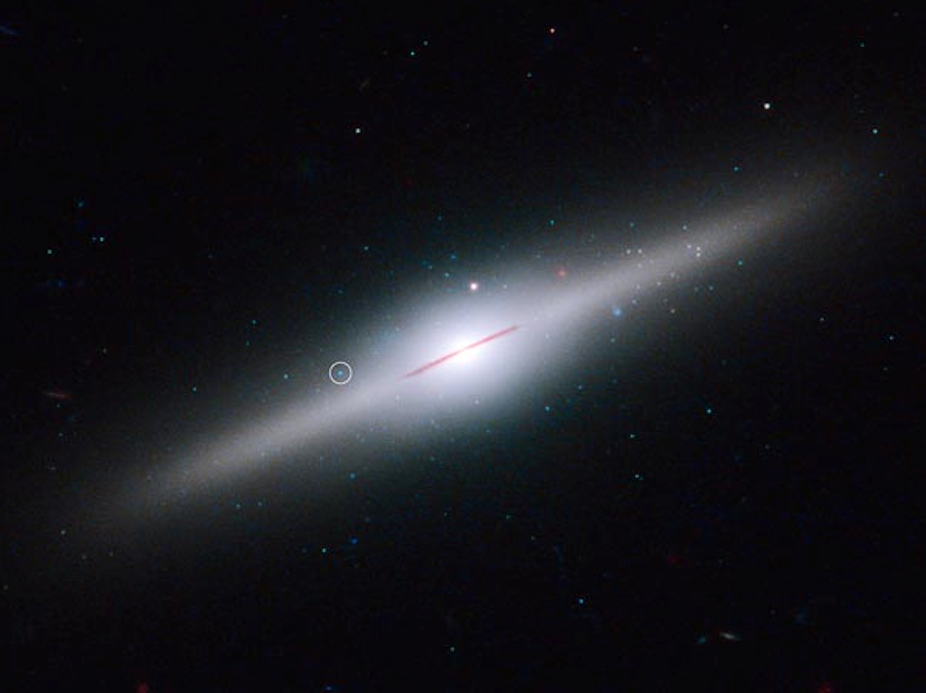Explosive outbursts of super-hot gas in a galaxy 300 million light-years away have provided evidence of the first known “middleweight” black hole, according to scientists who observed the plasma jets with a CSIRO radio telescope.
Until now, astronomers have only had strong evidence for the existence of two types of black hole - small stellar varieties three to 30 times the mass of our Sun, and supermassive black holes, which are a million to a billion times the mass of the Sun and exert enough gravitational pull to swallow our entire solar system.
The discovery of HLX-1 (hyper-luminous X-ray source 1) in a galaxy called ESO 243-49 may help to explain how supermassive black holes form, astronomers said. It is possible that a single medium-size black hole could consume enough matter to grow into a giant; alternatively, the supermassive black holes we see today may have formed when several intermediate ones merged in the early universe.
The international research team, comprising astronomers from France, Australia, Britain and the United States, has reported its findings in the journal Science.
“This is the first object that we’re really sure is an intermediate-mass black hole,” said Sean Farrell, an ARC Postdoctoral Fellow at the University of Sydney and a member of the research team.
Ron Ekers, a CSIRO Fellow who studies supermassive black holes in the centres of galaxies, said that although it was unclear how the giant regions of spacetime form, “they might come from medium-size ones merging. So finding evidence of these intermediate-mass black holes is exciting.”
HLX-1 was discovered by chance in 2009, because it stood out as a very bright X-ray source. As gas from a star or gas cloud is being sucked into a black hole, it is heated to extreme temperatures and shines in X-rays.
Dr Farrell said other bright X-ray sources that have been recorded by astronomers could all be explained as the product of lower mass black holes.
“Only this one can’t,” he said. “It is 10 times brighter than any of those other candidates. We are sure this is an intermediate-mass black hole — the very first.”
Since 2010 the researchers have been studying the black hole with CSIRO’s Compact Array radio telescope near Narrabri, NSW.
“From studying other black holes we know that sucking in the gas creates X-rays, but there’s then a sort of reflux, with the region around the black hole shooting out jets of high-energy particles that hit gas around the black hole and generate radio waves,” said Dr Farrell.
“So what we tend to see is the X-ray emission and then, a day or two or even a few days later, the source flaring up in radio waves.”
Dr Farrell speculates that a companion star traverses a very eccentric orbit around the black hole. When the companion comes close, the black hole strips gas from its partner, giving rise to the X-ray flaring.
The brightness of the X-ray and radio flares have allowed the team to put an upper limit on the mass of the black hole of 90,000 times the mass of the Sun. But Dr Farrell says a lower figure of around 20,000 solar masses is more likely.
Dr Ekers said there could be lots of other intermediate-mass black holes that are not currently feeding, and so are not detectable, “or are feeding at a very low rate, so they don’t stand out as intermediate-mass black holes,” .
HLX-1 may have been the central black hole of a low-mass “dwarf” galaxy that was swallowed by the larger galaxy ESO 243-49, just as our own Milky Way Galaxy has swallowed dwarf galaxies, Dr Farrell said. There is evidence of star-formation about HLX-1, which would be consistent with a “plunging dwarf”.

